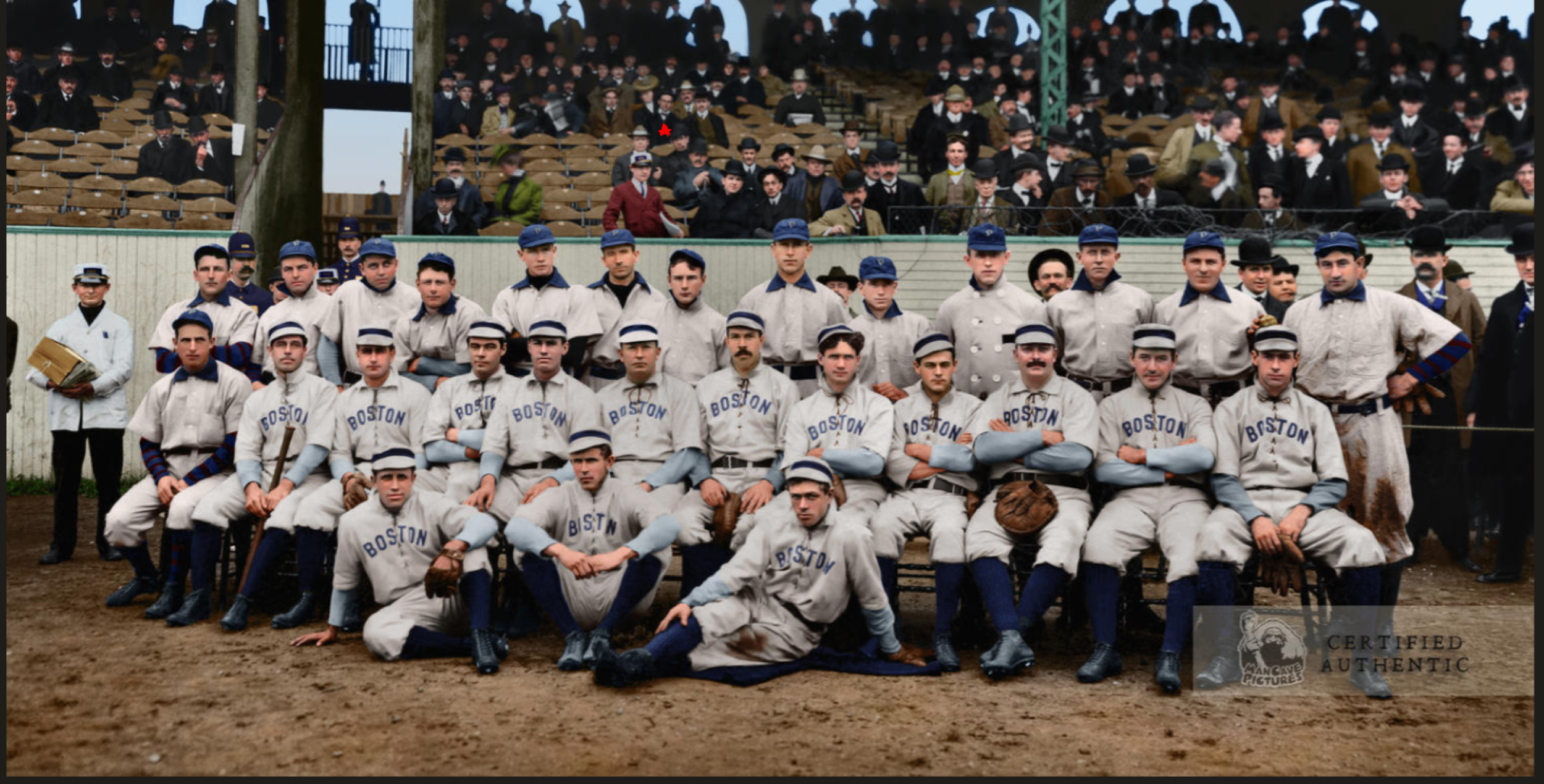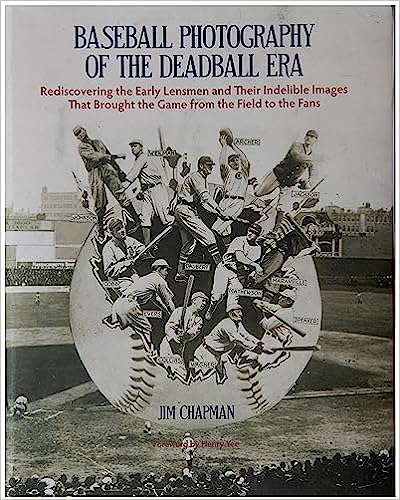Featured Photo Above:
Combined 1903 World Series Photo: Pittsburgh Pirates and Boston Pilgrims
(Color Restoration by Chris Whitehouse of Mancave Pictures)
Baseball History Comes Alive Now Ranked As a Top Five Website by Feedspot Among All Baseball History Websites and Blogs!
(Check out Feedspot's list of the Top 35 Baseball History websites and blogs)

Guest Submissions from Our Readers Always Welcome! Click for details
THE BASEBALL HISTORY COMES ALIVE BLOG
Please note: As we compose new blog entries, we will now send each one out to all our subscribers as we post them. Here’s a link to see the entire Blog Archives -GL
Date
New Blog Topic:
My Review of
Baseball Photography of the Deadball Era
I was recently sent a copy of a new book, Baseball Photography of the Deadball Era by SABR member Jim Chapman, asking if I would write a review for posting on Amazon. As you will see, I thought it was a great book and gave it a five-star rating. Below is my review:
If you’re a student of baseball history, especially one with an interest in the Deadball Era, I’d like to call your attention to a newly released book that is soon to become a classic addition to the genre of baseball photography: Baseball Photography of the Deadball Era, the work of baseball historian, researcher, and collector, Jim Chapman. It would be hard to improve upon this description from the Foreword by noted baseball researcher and collector, Henry Yee, who is also a contributor to the book: “Chapman brings it all together in this definitive edition on Deadball Era photography that is unmatched in depth and scope.” That’s a description I agree with wholeheartedly.
On one level, Baseball Photography of the Deadball Era is a treasure trove of hundreds of Deadball Era photographs—many previously unseen—compiled into one decorative edition. But it’s actually much more than that. It may be better described as a detailed learning experience—a monumental achievement of baseball research—which is at once a “deep-dive” into the history and evolution of Deadball Era photography, emphasizing the historical contributions of the era’s photographic giants. It’s certain to be recognized as a valued reference source that belongs in the library of all serious students of baseball history.
The book will have appeal on different levels. Certainly, those who want to increase their knowledge of one of the most important eras of baseball history will be richly rewarded; but it will also appeal to those legions of baseball history fans who get enormous satisfaction from just looking at old baseball photos. This is also a book for them. Readers have the option of “picking and choosing” from the many interesting topics listed in the table of contents. Alternatively, serious students who read it from cover to cover will greatly enhance and expand their knowledge of this important era.
A detailed opening section presents an overview of early baseball photography (with ten interesting sub-chapters). This is followed by essays exploring the careers of many well-known iconic photographers accompanied by selections from their work. Featured collections include those of Charles Conlon, George Bain, and Francis Burke. Essays exploring the works of lesser-known photographers come next, with Mr. Chapman providing many of them with well-deserved exposure before they are lost over the passage of time.
For a long-time student of baseball history like myself, the book has immense value, featuring many previously unseen photos. All are presented with detailed background information and needed historic context. Also interesting is the analysis of photo back stamps, an area of photographic history to which I had no previous exposure. Assembled as a beautiful coffee-table edition, this well-written, well-edited book provides the reader with something new on almost every page. There are plenty of photos of Deadball Era stars, including Babe Ruth, Shoeless Joe Jackson, Christy Mathewson, Shoeless Joe Jackson, Tris Speaker, Walter Johnson, and Ty Cobb, with selections from the author’s extensive personal collection. Many of the author’s favorite players—most notably Chief Bender—are well represented. There are also ample photos of the era’s lesser-known stars. In researching this book, the author was granted access to many historic photographs from private collections, all of which greatly enhance the book’s unique appeal. To my knowledge, there has never before been a compilation such as this.
As author Jim Chapman states in his introduction, his purpose in writing this book was to “rediscover the glory that was the Deadball Era.” He has succeeded marvelously in this quest, in ways I believe no one else has ever done. Baseball Photography of the Deadball Era is a book I highly recommend to all students of the game, especially those who wish to enhance their knowledge of the Deadball Era and their appreciation for the many photographers whose ground-breaking efforts opened the doors to modern sports photography.
Gary Livacari
As always, we enjoy reading your comments
Here’s a link to see the entire Blog Archives



This looks like an absolute “bookshelf beauty” for any baseball fan–whether you’re an expert on the Dead Ball Era, like Gary Livacari, or just a fan like me who’s always looking to learn more about the sport.
Thanks Bill…it’s a good one!